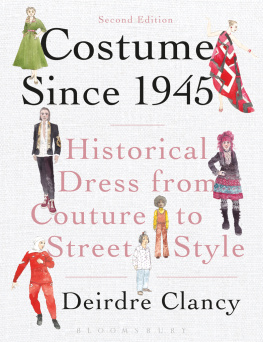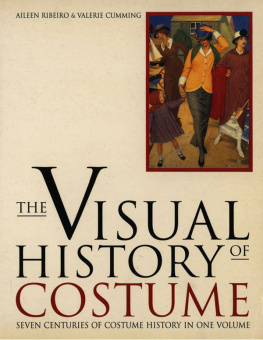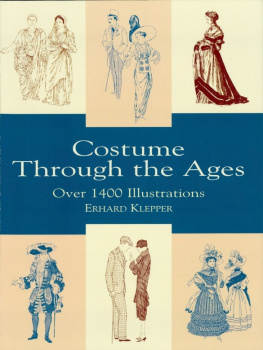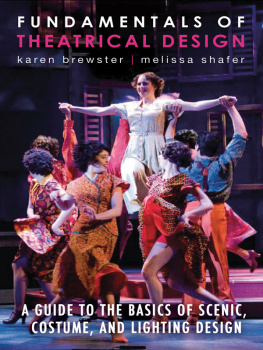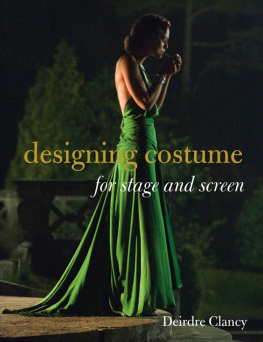Costume Design
The Basics
Costume Design: The Basics provides an overview of the fundamental principles of theatrical costume design, from pre-production through opening night.
Beginning with a discussion of what costume design is, why people wear clothes, and what the role of the costume designer is, this book makes accessible the art and practice of costume design. Peppered with interviews with working costume designers, it provides an understanding of what it means to be a costume designer and offers a strong foundation for additional study.
Readers will learn:
How to use clues from the script to decipher a characters wardrobe
Methods used to sketch ideas using traditional or digital media
How to discuss a concept with a team of directors, producers, and designers
Strategies to use when collaborating with a professional costume shop
How to maintain a healthy work/life balance
Courses of action when working under a limited money and labor budget.
Costume Design: The Basics is an ideal starting point for aspiring designers looking for ways to achieve the best costumes on stage and realize their vision into a visual story told through clothing.
T. M. Delligatti is a Service Assistant Professor of Costuming at West Virginia University and has constructed over a hundred shows professionally at Shakespeare & Company, Hartford Stage, Connecticut Repertory Theatre, and many others.
The Basics
The Basics is a highly successful series of accessible guidebooks which provide an overview of the fundamental principles of a subject area in a jargon-free and undaunting format.
Intended for students approaching a subject for the first time, the books both introduce the essentials of a subject and provide an ideal springboard for further study. With over 50 titles spanning subjects from artificial intelligence (AI) to womens studies, The Basics are an ideal starting point for students seeking to understand a subject area.
Each text comes with recommendations for further study and gradually introduces the complexities and nuances within a subject.
Special Educational Needs and Disability (third edition)
Janice Wearmouth
Sport Management
Robert Wilson and Mark Piekarz
Sports Coaching
Laura Purdy
Translation
Juliane House
Town Planning
Tony Hall
Womens Studies (second edition)
Bonnie G. Smith
Sigmund Freud
Janet Sayers
Costume Design
T. M. DELLIGATTI
For a full list of titles in this series, please visit: www.routledge.com/The-Basics/book-series/B
Costume Design
The Basics
T. M. Delligatti

First published 2021
by Routledge
52 Vanderbilt Avenue, New York, NY 10017
and by Routledge
2 Park Square, Milton Park, Abingdon, Oxon, OX14 4RN
Routledge is an imprint of the Taylor & Francis Group, an informa business
2021 Taylor & Francis
The right of T. M. Delligatti to be identified as author of this work has been asserted by them in accordance with sections 77 and 78 of the Copyright, Designs and Patents Act 1988.
All rights reserved. No part of this book may be reprinted or reproduced or utilised in any form or by any electronic, mechanical, or other means, now known or hereafter invented, including photocopying and recording, or in any information storage or retrieval system, without permission in writing from the publishers.
Trademark notice: Product or corporate names may be trademarks or registered trademarks, and are used only for identification and explanation without intent to infringe.
Library of Congress Cataloging-in-Publication Data
Names: Delligatti, T. M., author.
Title: Costume design : the basics / T.M. Delligatti.
Description: New York, NY : Routledge, 2021. |
Series: The basics | Includes bibliographical references and index.
Identifiers: LCCN 2020015258 (print) | LCCN 2020015259 (ebook) |
ISBN 9780367374174 (hardback) | ISBN 9780367374181 (paperback) |
ISBN 9780429354304 (ebook)
Subjects: LCSH: Costume design.
Classification: LCC PN2067 .D45 2021 (print) |
LCC PN2067 (ebook) | DDC 792.02/6dc23
LC record available at https://lccn.loc.gov/2020015258
LC ebook record available at https://lccn.loc.gov/2020015259
ISBN: 978-0-367-37417-4 (hbk)
ISBN: 978-0-367-37418-1 (pbk)
ISBN: 978-0-429-35430-4 (ebk)
Typeset in Bembo
by Newgen Publishing UK
For my parents, Gary and Carol Delligatti
Contents
To those whove aided me on this journey: Janice Ferger, Katie McCarthy, Casey McNamara, Emily Stafford, Cody Lorich, Lauren Brennan, Ambrose Hall, Hugh Blackthorne, Cecily Steinhour, Tonia Markou, Feren White, and Joanna Koefoed.
Introduction
The first rule of costume design is there are no rules, but there are guidelines and conventions that can increase chances of success, helping the new costume designer develop an eye for what is effective. But what does it mean to be effective? How do designers know when their work is good?
Costumes are garments that bring a character to life. They tell a story of a person, of a creature in the night, of a monster, a whimsical spirit, and countless others. Using clothes as context clues, the audience can know a characters personality before they say a single word. They help immerse an audience in a story and make them suspend their disbelief for a few short hours. Costume design creates verisimilitudea show that is verisimilitudinous means its world feels plausible enough to be believable to an audience. It is the illusion of reality.
The best designers work looks effortless on stage, as if the characters in the play are real people and not actors. What a layperson does not see is the thousands of hours of research, drawing, planning, discussion, shopping, building, and improvising. The script offers words for the actor, but costume designersin collaboration with scenic, light, and soundput the character into the world.
A designer wields two main tools: an understanding of human behavior and the costume itself (which can include clothing, masks, makeup, and a variety of accessories). When designers read a script, they must figure out the core of each characters personality. After a thorough knowledge is gained, they dress characters in a way that makes that character believable within the world the team wants to create.
In order to understand a character enough to choose their wardrobe, first, a designer must understand why people wear clothes.
Why People Wear Clothes
In 3300 BCE, a 45-year-old man died on the tztal Alps, his body soon frozen within the glacier. In 1991, two hikers discovered his perfectly preserved body, including his clothing. Scientists named him tzi.
tzi wore a grass cloak, a sheep-hide loincloth, and a coat sewn together with pieces of goat and sheep fur. The shoes had been carefully constructed with deer hide using dry grass as insulation. With this outfit, tzi could face the profound cold, the torrential winds, the heavy rains, and all the deep snow that came with living in the mountains.

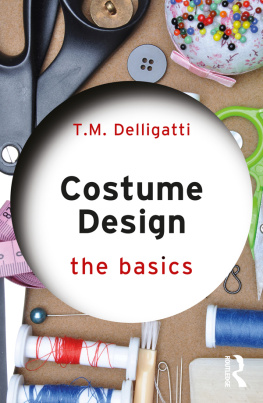

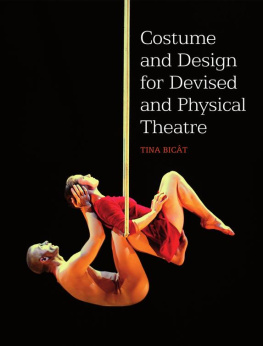

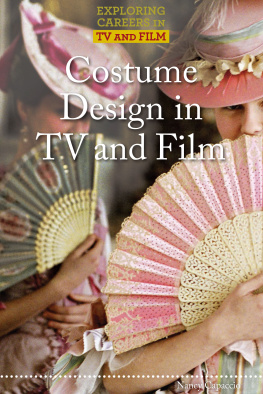
![Helen Q. Huang [黄其智] - Character Sketch: A Drawing Course for Costume Designers](/uploads/posts/book/307621/thumbs/helen-q-huang-character-sketch-a.jpg)
